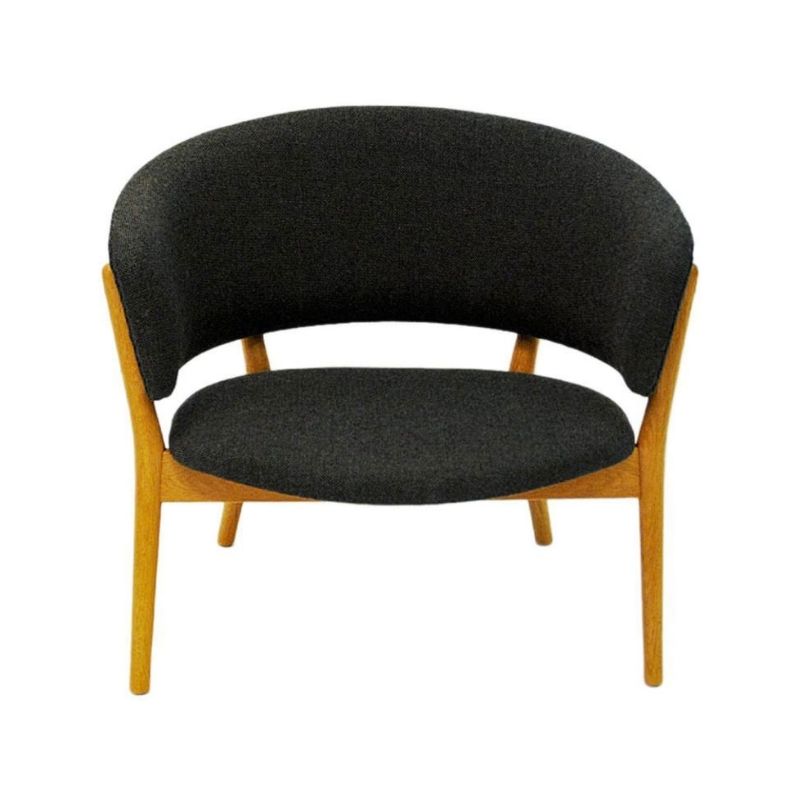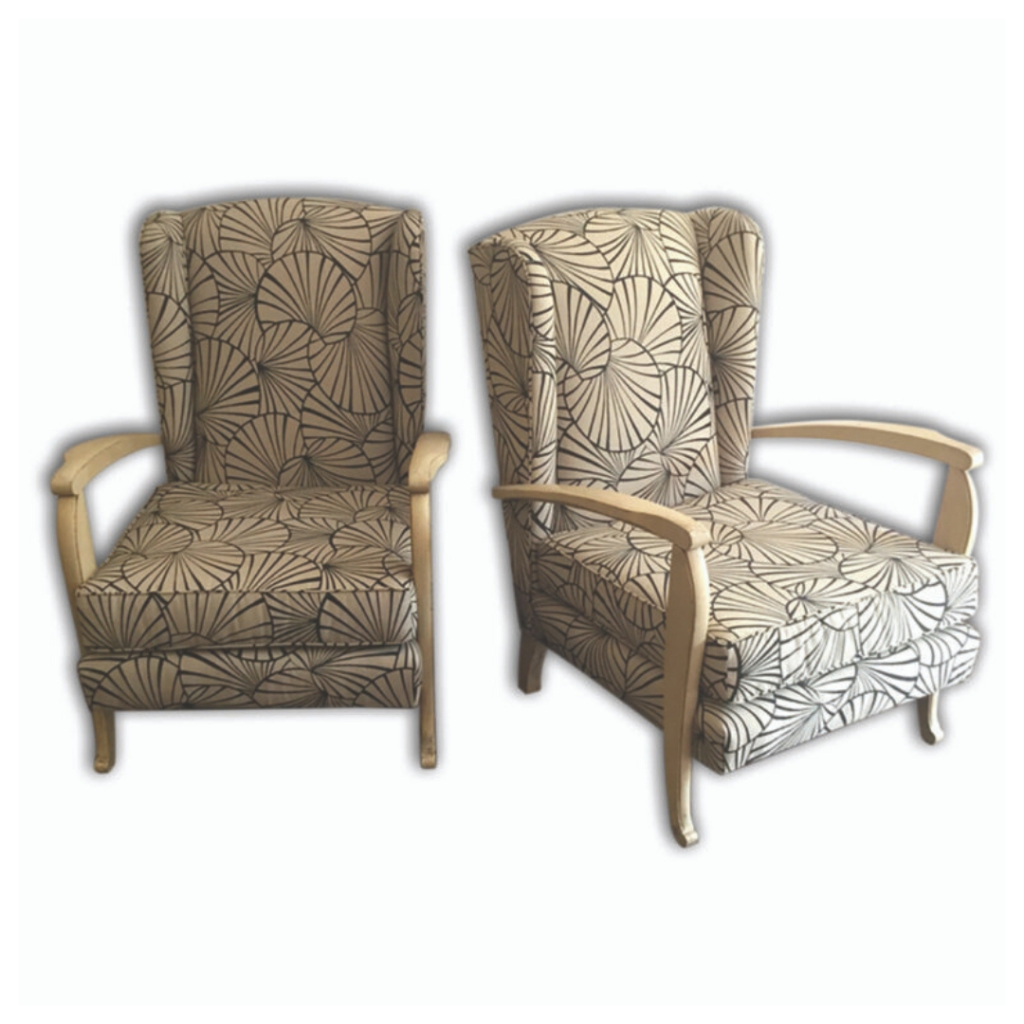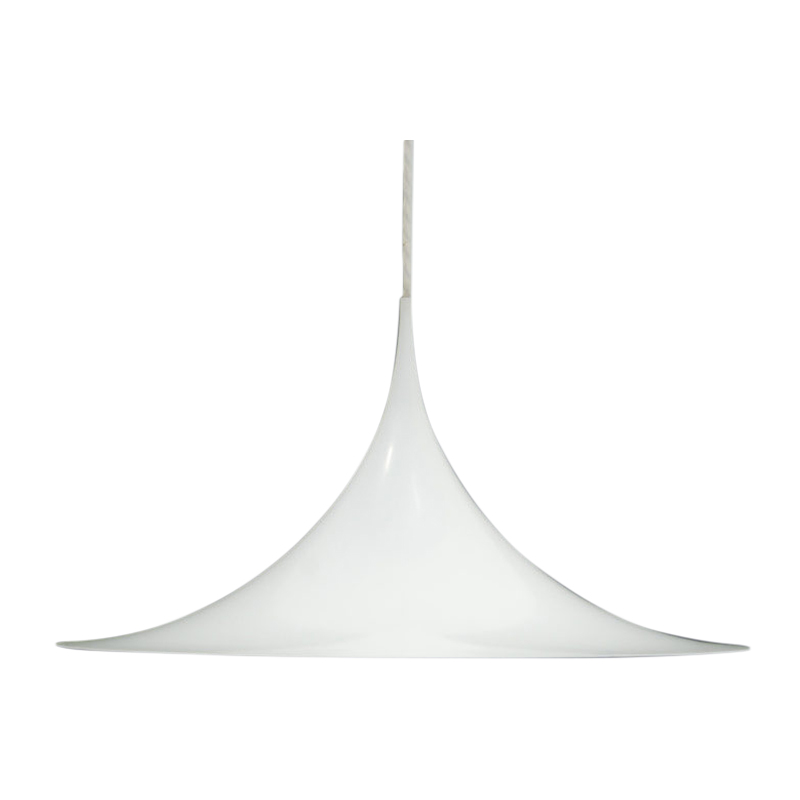This is a follow-up to an earlier ID request on a massive walnut sideboard (photos 1-4). I did an image search on the two most distinctive features of the sideboard — the back-beveled slate top and the trapezoidal cut-outs in the drawers. I found the beveled slate top on a Dunbar commode (sixth photo) and the trapezoidal cut-outs in a Dunbar basketweave sideboard (fifth photo).
Does it look like a Dunbar?
[P.S. I only found two other pieces which had a back-beveled slate top: Knoll's Saarinen tulip table (outdoor version) and Knoll's PaperClip table by Lella and Massimo Vignelli.]  <img class="wpforo-def
<img class="wpforo-def
I am not the Dunbar expert you are looking for, but those drawer cut outs are not the same shape, and similar drawers are pretty common. If you could match it perfectly you might have something.
And the slate of edge profile is not the same either. So again, perhaps if it were a perfect match you would have something.
Have you tried looking for the black legs and apron? Also, easily overlooked things like the hardware, those door catches in this case, can often be illuminating. If you can find the same door catches on other pieces by a company, it can suggest you are on the right track. If you can't find them on any Dunbar piece, it miht suggest differently.
I am by no means a Dunbar/Wormley expert-but I did just go through some Dunbar referenced in my collection. I looked at the Dunbar Book of Contemporary Furniture (1956), The Dunbar Book of Modern Furniture (1952) and Edward Wormley The Other Face of Modernism (Catalog of an exhibition at Lin Wrinberg Gallery 1997. I did not see your credenza in any of these books. Below are the Credenzas I found in the two Dunbar books. There was nothing additional in the Wormley book
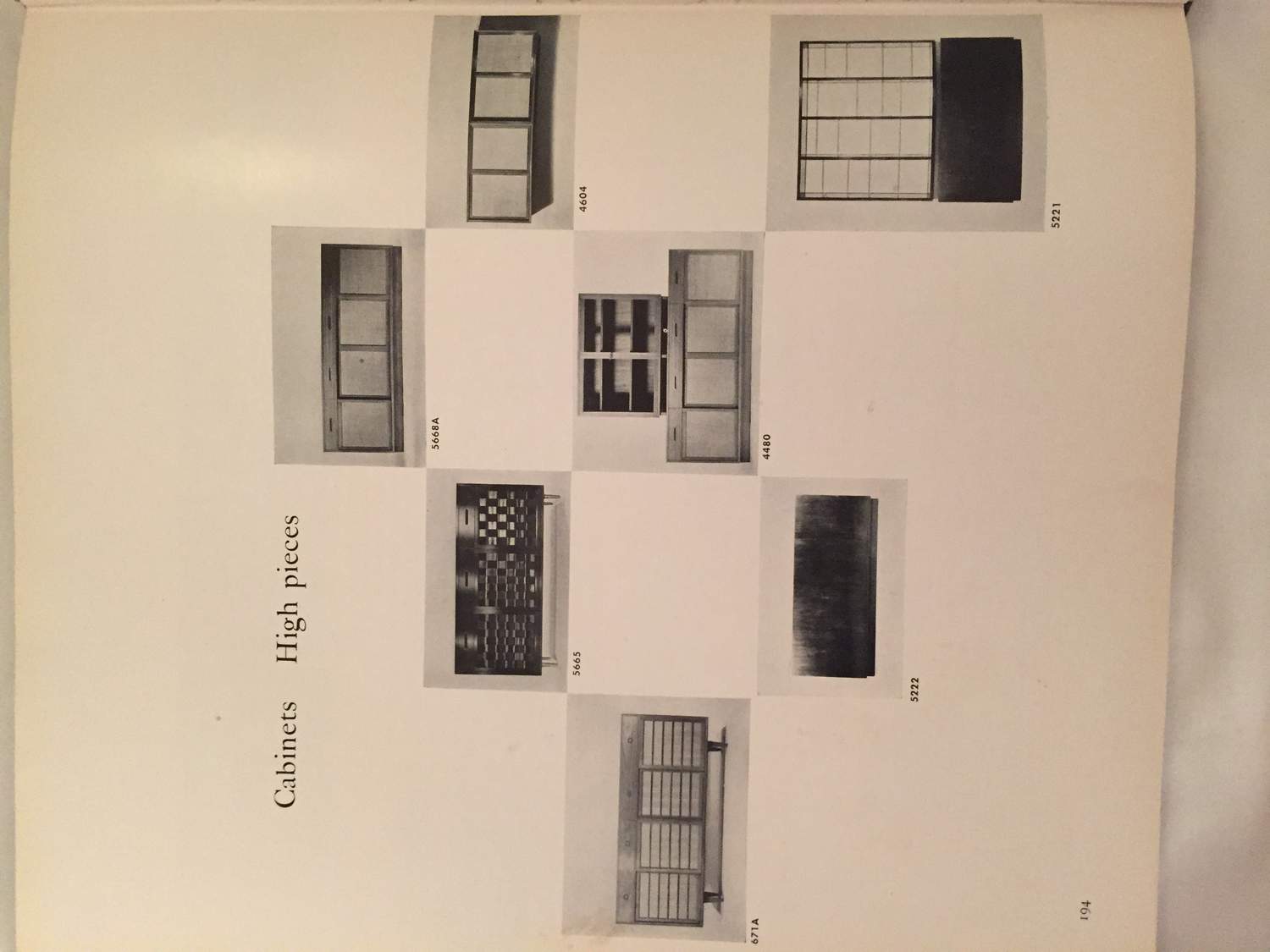
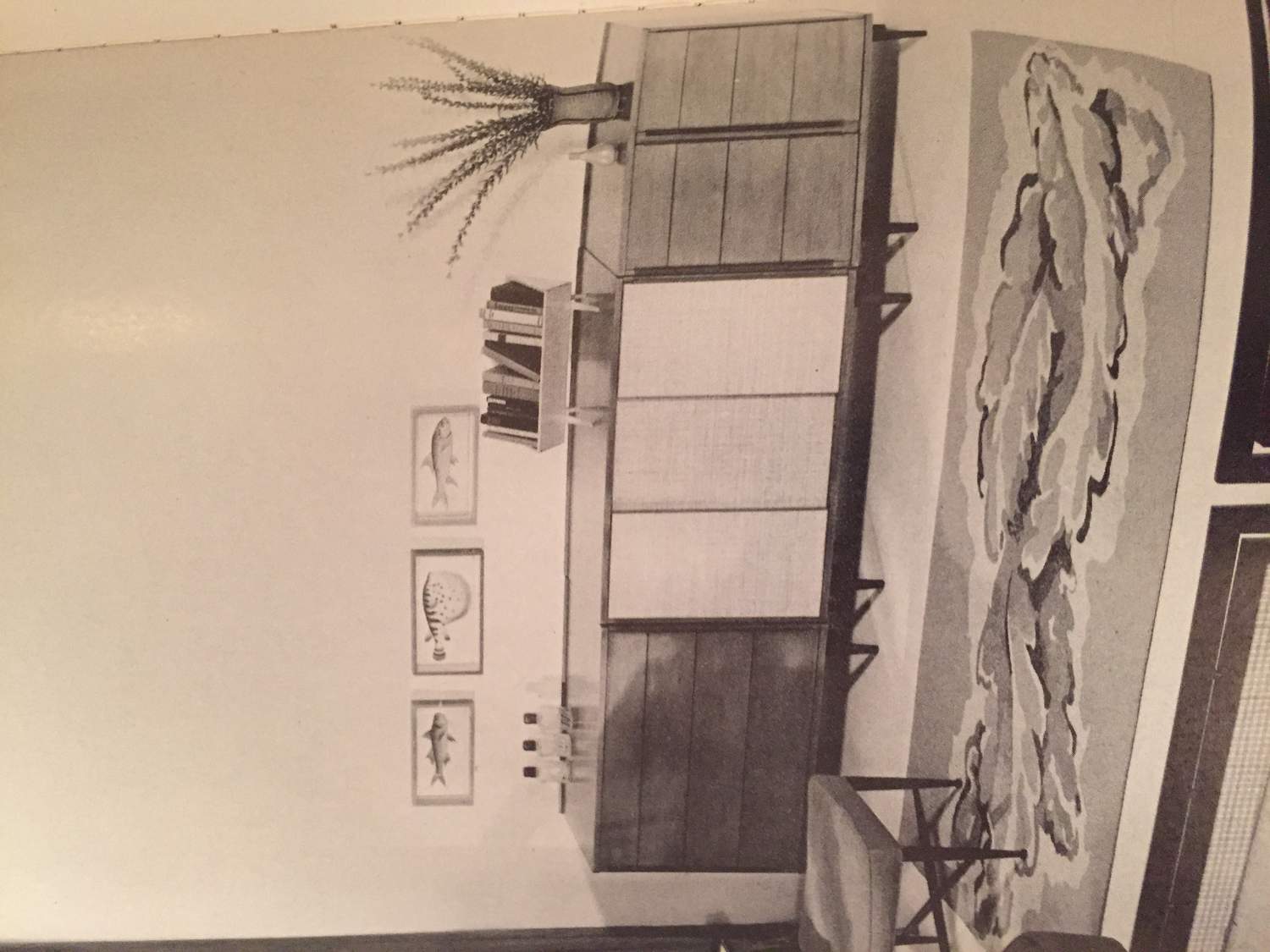
If it is Dunbar, it would probably be later and be part of the Contract Division which supplied custom pieces to more corporate/institutional type clientele. It's hard to tell from your photos but most Dunbar bases of that shape aren't simply painted wood -- they're usually ebonized mahogany so that might be a good detail to start with
Thank you all -- leif ericson, Emcee M, jesgord, minimoma, and parafo -- for your generous help.
The Knoll pieces are a slightly better match to the slate top profile (see photos below) but that seems unlikely to me.
I do suspect it's a custom piece — primarily because its large size (33.5"h x 110"w x 20"d, or 85cm h x 279cm w x 51cm d) might hinder sales to a wide audience.
The sideboard is still in transit from the auction house. When it arrives, I'll check the hinges, leif ericson.
Thanks again.


It was not so uncommon to offer credenzas with an array of options, so it can be tricky figuring out which details are the universal ones, and which details were frequently changed. For instance there might have been a variety of legs options (or plinth and floating mount), wood veneer options, contrasting top options, internal storage options, length options, etc.
Sometimes the best thing to look for is a little inconsequential detail, like a hinge or how a drawer is made, that the manufacturer is likely to have used everywhere, and then try to progressively narrow the field of possibilities.
You are cursed not to have handles on that piece, because they are the one thing that the customer can be relied on to actually touch frequently, they often got a lot of attention from the designer such that they are signature details.
I remembered this morning that I have a late 1980's Dunbar binder. Looking through the catalog, I found several cabinets without handles. That said, almost all the pieces from this period are on plinth bases. There is one beatiful burl cabinet that has a stretcher base, but it does not run the entire length of the cabinet (it is two stretchers on either end). I did not see anything all that similar to your piece in the catalog
I've received and examined the sideboard, and I now think it's custom piece built by a cabinet maker (rather than a furniture maker) based on the construction details described below. I suspect it was built for a restaurant since it has two felt-lined drawers with dividers. Plus, the slate top would be a practical choice for a restaurant.
The face frame is solid walnut with mitered corners. The case is constructed out of veneered plywood, rather than MDF. The doors have walnut veneer on both faces with edge banding. The drawers have walnut veneer on the visible face, birch veneer on the inside face, and no edge banding. The vertical partitions are walnut veneer plywood, but the shelves, bottom deck, and back are birch veneer plywood stained a walnut color. The slate top is supported by a ladder frame (with a dado cut for the cross pieces), and it is made of pine or spruce. The plinth is made of black lacquered solid oak. Although the piece was attached to the wall by screws in the ladder frame (see notches) and the plywood back, I think it's doubtful that it was a wall-hung cabinet due to the weight of the slate top.
The doors have Soss-style concealed hinges (pictured) and magnetic push-to-open latches (although addtional screw holes show they are not original). The shelves are adjustable with brass-tone shelving standards. The drawers are rabetted rather than dovetailed and have rather cheap side-mounted metal glides.
Although I'm less than impressed by the interior details and the plinth construction, the slate top and the face frame with its tightly toleranced doors seem top quality. I'm happy with it for the price I paid ($325).
Now it's time to clean and oil it and make some minor repairs. Stay tuned for the "after" photo.


If you need any help, please contact us at – info@designaddict.com





